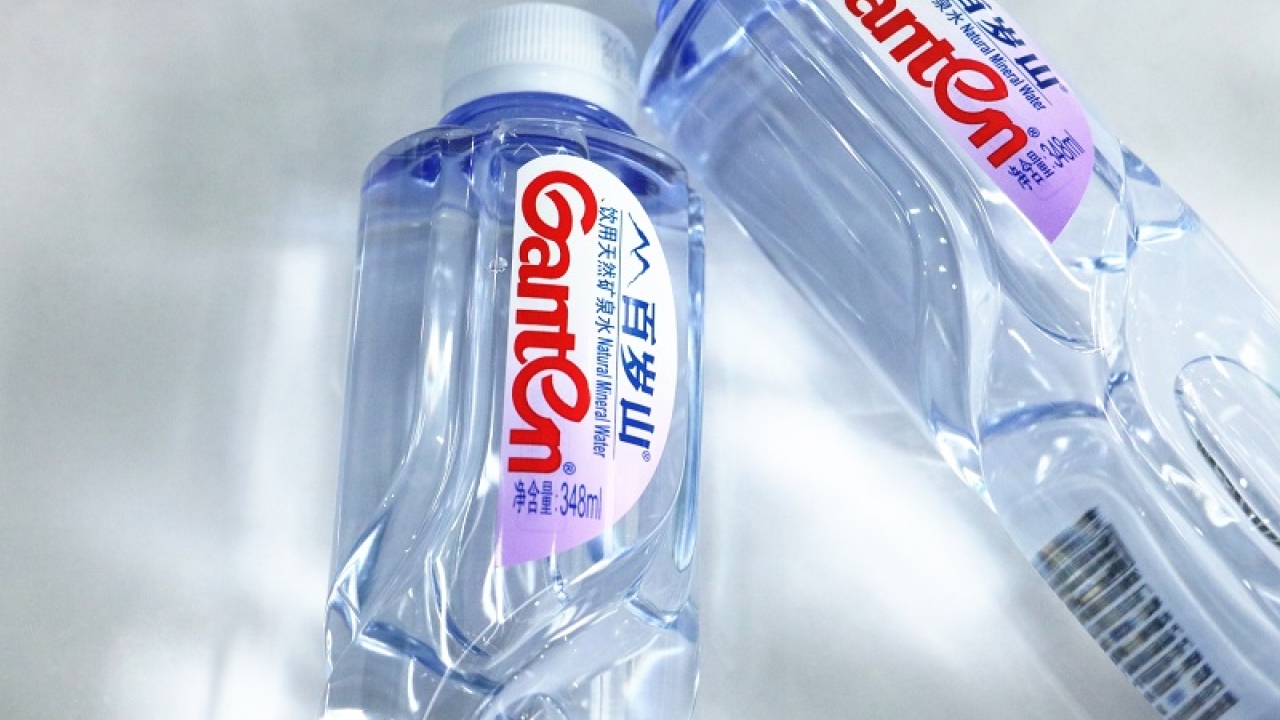Hush Label shows less is more

Established in 2010, Guangzhou Hush Label Printing is located in Yunpu industrial park, Luogang District, Guangzhou, in a 2,000sqm factory which hosts 40 employees. In 2017, its turnover exceeded 30 million RMB (US$4.5m) with 20-30 percent taken by overseas business.
‘Our major business is to design and print labels for skin care products, beverages, chemicals, air transport and more,’ says Hu Hui, general manager of Hush Label. ‘In our company, small, medium and large orders each represent 30 percent of the business, with the remaining 10 percent dedicated to thermal transfer labels.’ At present, Hush Label is equipped with an Amsky Aura 600e flexo CtP system, Label King flexo press, Zhongte offset press, Haotian semi-rotary letterpress, Label King full rotary letterpress, and several finishing machines.
Hu has been active in the label industry for 20 years, working his way up from the factory floor to technical management roles, then as the general manager of a company with 110 employees, before starting his own company eight years ago.
‘In my opinion, there is huge potential for development in the Chinese label market,’ he says. ‘Firstly because of our population advantage, and also because there is still a gap between our label printing technology and that of international markets.’
Grow together
Hu Hui attributes Hush Label’s development and achievements to one concept: ‘Divide and conquer, start from small brands and customers, grow together.’
‘Compared with large enterprises, Hush has no advantages in funds and R&D strength,’ he admits. ‘But a small company has also its own features and advantages, such as production flexibility and prompt reaction to the market.’
Hu Hui regards his customers as partners with whom he can explore the limitless possibility of label production. Especially for new products, he likes to involve them throughout the processes, including design, material selection, testing, market research and feedback. ‘More than just being a label printer, we need to stand in the shoes of our customers and consider the demands of the end user.’
‘I am not trained in this field. I have no systematic printing knowledge,’ he reveals. ‘All my skills are based on hands-on experience of production. That is how I got my chance to develop.’ Hush Label’s growth, similarly, has come from the grassroots level. It began operations with one person in a space of 100sqm. After three moves, it has grown to its current 30 million RMB turnover, serving domestic and international brands such as BASF, BY-Health, Maxim, Qatar Airways, MG and Vinda.
With years of front-line production and management experience, Hu Hui has introduced a culture of focus and innovation into every phase of Hush Label’s growth. In the company’s early days, recalls Hu, domestic labels were mainly produced by gravure printing. ‘But this has disadvantages: complicated pre-press technology, slow and costly plate-making, as well as the volatile solvents which contain high levels of hazardous gas.’ His early experience in a gravure print shop lead him to aspire to improve the working conditions in such an operation. He dedicated himself to studying and researching gravure, letterpress, offset and flexo printing, and consciously directed his customers towards the more environmentally friendly processes. Today, Hush Label firmly complies with national rules and regulations regarding environmental protection, and was granted a national pollutant discharging license three years ago.
‘Such an endeavor brings bilateral benefits: not only does it reduce the label printing costs, but it also improves profits and product quality,’ he says. ‘There is nearly no odor, which satisfied our customers. This facilitates acceptance and loyalty on both sides.’
‘Aside from the printing technology, post-press finishing and inspection also have a huge impact on the quality of the label,’ he continues. Hush Label has invested heavily in this area, with finishing equipment from Brotech, Rhyguan and Riborn, and inspection from Daheng Image.
With Hush Label’s rapid growth and continuing pursuit of environmentally friendly production, the company has decided to purchase two flexo presses from an Italian manufacturer. The first arrived in June of this year, with the second due to be installed in May 2019. ‘I can’t reveal the brand and model of the presses, but the machines will help us to expand in the FMCG market,’ says Hu.
In order to solve the problem of waste disposal, Hush Label has launched China’s first post-press waste collection system, called SZX-108, which breaks up, compresses and seals waste scraps, saving space and improving the recovery rate of waste. The system has been granted a Chinese utility model patent.
‘Our innovative technology and high quality products bring us loyalty from our customers. They are happy to be involved in research and development.’
Innovate
‘Alongside the improvements in people’s living standards, the demand for labels – and the requirements placed upon them – are increasing,’ says Hu. ‘The whole industry is due to experience a revolution. Anyone who stays still, content with their current achievements, will not survive. The only way is to continuously innovate technology and products, and keep pace with the market. You have to be prepared.’
This philosophy is reflected in Hush Label’s training of staff and management processes. ‘Management of our professional talent and standards is at the core of the company’s growth. We place huge importance on the training of our staff, and detail-oriented management in order to meet different challenges.’ Vindication of this is Hush Label’s low employee turnover, with some two-thirds of staff working at the company for more than six years.
Hu is bullish about the potential for digital technology in the Chinese label market, but also with a note of caution. ‘One cannot simply follow a general trend. Digital printing technology has satisfied the demands of variable data and personalized label in the market today, but the technology moves quickly and there are not sufficient applications. So we continue to study it systematically.’
This is a concern matched by many small and medium-sized printers in China: the move from conventional to digital technology is not just a shift in technology, but a shift in mindset too.
As the old saying goes: ‘Change, then you will be unimpeded and you can remain. Remain longer, and you will be stronger.’ Time will witness the development at continuously changing Hush Label.
Stay up to date
Subscribe to the free Label News newsletter and receive the latest content every week. We'll never share your email address.


